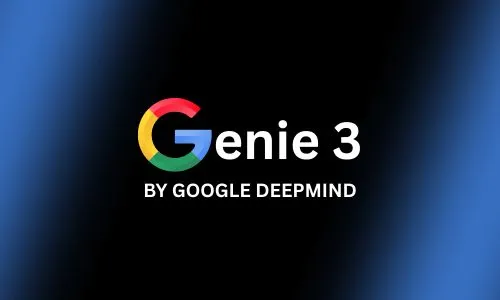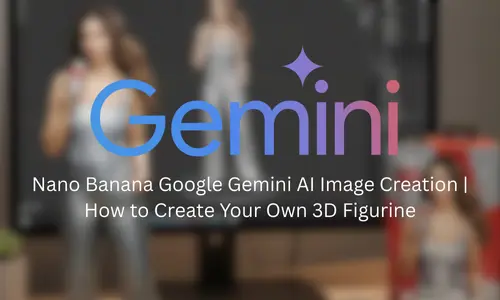DeepMind Launches Genie 3 | Transforming Text into Immersive 3D Worlds

Announces Imagen 4: A model for your creative needs in Gemini
August 16, 2025
Container Use: Run Multiple AI Coding Agents in Parallel
August 22, 2025DeepMind has once again pushed the boundaries of artificial intelligence with its latest breakthrough. Genie 3 stands out as a groundbreaking text-to-3D interactive world model, enabling users to create fully explorable virtual environments simply by describing them in words. This innovation promises to revolutionize how we interact with digital spaces, from gaming to education and beyond. As AI continues to evolve, tools like this one highlight the potential for more intuitive and creative human-machine collaborations.
Understanding the Core Concept
DeepMind’s newest creation builds on previous advancements in generative AI, focusing on converting textual inputs into dynamic three-dimensional scenes. At its heart, this system interprets natural language prompts to construct detailed, interactive models that users can navigate and manipulate in real time.
The Evolution from Earlier Models
Previous iterations in DeepMind’s lineup emphasized 2D image generation or basic simulations. This version elevates the technology by incorporating depth, physics, and user interactivity. Developers drew inspiration from real-world physics engines and neural networks trained on vast datasets of 3D objects and environments. The result is a seamless blend of creativity and realism, where a simple sentence like “a bustling medieval castle on a misty hill” springs to life with towers, drawbridges, and even animated inhabitants.
Key Technological Foundations
The model relies on advanced machine learning techniques, including transformer architectures and diffusion processes, to ensure high-fidelity outputs. It processes text through multiple layers: first parsing the description for key elements, then generating a skeletal structure, and finally adding textures, lighting, and behaviors. This layered approach minimizes errors and enhances the overall immersiveness of the created worlds.
Standout Features That Set It Apart
What makes this launch particularly exciting are the unique capabilities that distinguish it from competitors. These features cater to both casual users and professionals, offering versatility across various applications.
Real-Time Interactivity and Customization
Users can not only generate worlds but also interact with them instantly. For instance, once a scene is built, you can walk through it, pick up objects, or alter elements on the fly using additional commands. Customization options allow for fine-tuning details like weather effects, time of day, or even gravity settings, making each creation truly personalized.
High-Resolution Rendering and Scalability
The system supports ultra-high resolutions, ensuring that generated environments look stunning on any device, from smartphones to high-end VR headsets. Scalability is another highlight; it can handle small rooms or vast landscapes without compromising performance, thanks to optimized algorithms that distribute computational load efficiently.
Integration with Existing Tools
Compatibility plays a big role here. It seamlessly integrates with popular software like Unity or Unreal Engine, allowing developers to export models for further refinement. Additionally, APIs enable embedding this functionality into apps, websites, or even augmented reality experiences, broadening its reach.
How the Technology Operates Behind the Scenes
Diving deeper into the mechanics reveals a sophisticated process that combines cutting-edge AI with user-friendly interfaces. This section breaks down the step-by-step workflow to give a clearer picture of its inner workings.
Input Processing and Interpretation
Everything begins with the user’s text prompt. The AI employs natural language processing to break down the description into components such as objects, actions, and relationships. For example, if the prompt mentions “a forest with glowing fireflies at dusk,” it identifies the setting, lighting, and dynamic elements separately.
Generation and Refinement Phases
Once interpreted, the model generates a base 3D mesh using generative adversarial networks. Refinement follows, where details like textures and animations are added iteratively. Users can provide feedback during this phase, prompting the AI to adjust aspects like color schemes or object placements until satisfaction is achieved.
Output and Interaction Loop
The final output is a fully navigable world. An interaction loop allows continuous modifications; say something like “add a river,” and the scene updates in seconds. This iterative design encourages experimentation and creativity, making the tool accessible even to those without technical expertise.
Practical Applications Across Industries
The versatility of this technology opens doors to numerous real-world uses, transforming industries that rely on visualization and simulation.
Revolutionizing Game Development
Game designers can prototype entire levels from descriptions alone, speeding up production cycles. Indie developers, in particular, benefit from reduced costs and time, as they no longer need extensive modeling skills to bring ideas to fruition.
Enhancing Educational Experiences
In education, teachers can create interactive lessons. Imagine students exploring ancient Rome or dissecting a virtual ecosystem, all generated from textbook descriptions. This hands-on approach fosters deeper understanding and engagement among learners of all ages.
Boosting Architectural and Design Fields
Architects and interior designers use it to visualize concepts quickly. Clients can “walk through” proposed buildings or rooms based on verbal ideas, facilitating better communication and faster iterations in the design process.
Advancing Medical and Scientific Simulations
In healthcare, it aids in simulating surgical environments or molecular structures. Scientists can model complex phenomena, like climate changes in a virtual globe, providing valuable insights without physical prototypes.
Potential Challenges and Ethical Considerations
While the benefits are immense, it’s important to address hurdles that come with such powerful tools. Ensuring responsible use remains a priority.
Addressing Technical Limitations
Current constraints include computational demands, which might require powerful hardware for optimal performance. DeepMind is working on cloud-based solutions to make it more accessible, but bandwidth and latency could still pose issues in remote areas.
Privacy and Data Concerns
Since the model learns from vast datasets, questions about data sourcing arise. DeepMind emphasizes ethical training practices, using anonymized and consented information to avoid biases or privacy infringements.
Mitigating Misuse Risks
There’s potential for creating misleading content, such as fake historical recreations. Guidelines and built-in safeguards, like watermarking generated worlds, help prevent abuse while promoting transparency.
Future Prospects and Innovations Ahead
Looking forward, this launch signals exciting developments in AI-driven creativity. DeepMind hints at upcoming updates that could incorporate multimodal inputs, like combining text with images or voice commands for even richer experiences.
Expanding to Collaborative Environments
Future versions might support multi-user interactions, where teams collaborate on shared worlds in real time. This could transform remote work, virtual meetings, or social gaming platforms.
Integration with Emerging Technologies
Pairing with advancements in VR/AR hardware will amplify its impact. Imagine donning a headset and stepping into a world crafted from your imagination, blurring lines between digital and physical realities.
Broader Societal Impact
As adoption grows, it could democratize content creation, empowering artists, educators, and innovators worldwide. However, ongoing research into AI ethics will be crucial to harness its full potential responsibly.
Wrapping Up the Breakthrough
DeepMind’s introduction of this text-to-3D interactive world model marks a pivotal moment in AI evolution. It bridges the gap between imagination and reality, offering tools that inspire creativity across diverse fields. Whether you’re a developer, educator, or enthusiast, exploring these capabilities could unlock new possibilities. Stay tuned for updates as this technology continues to shape the future of digital interaction.


